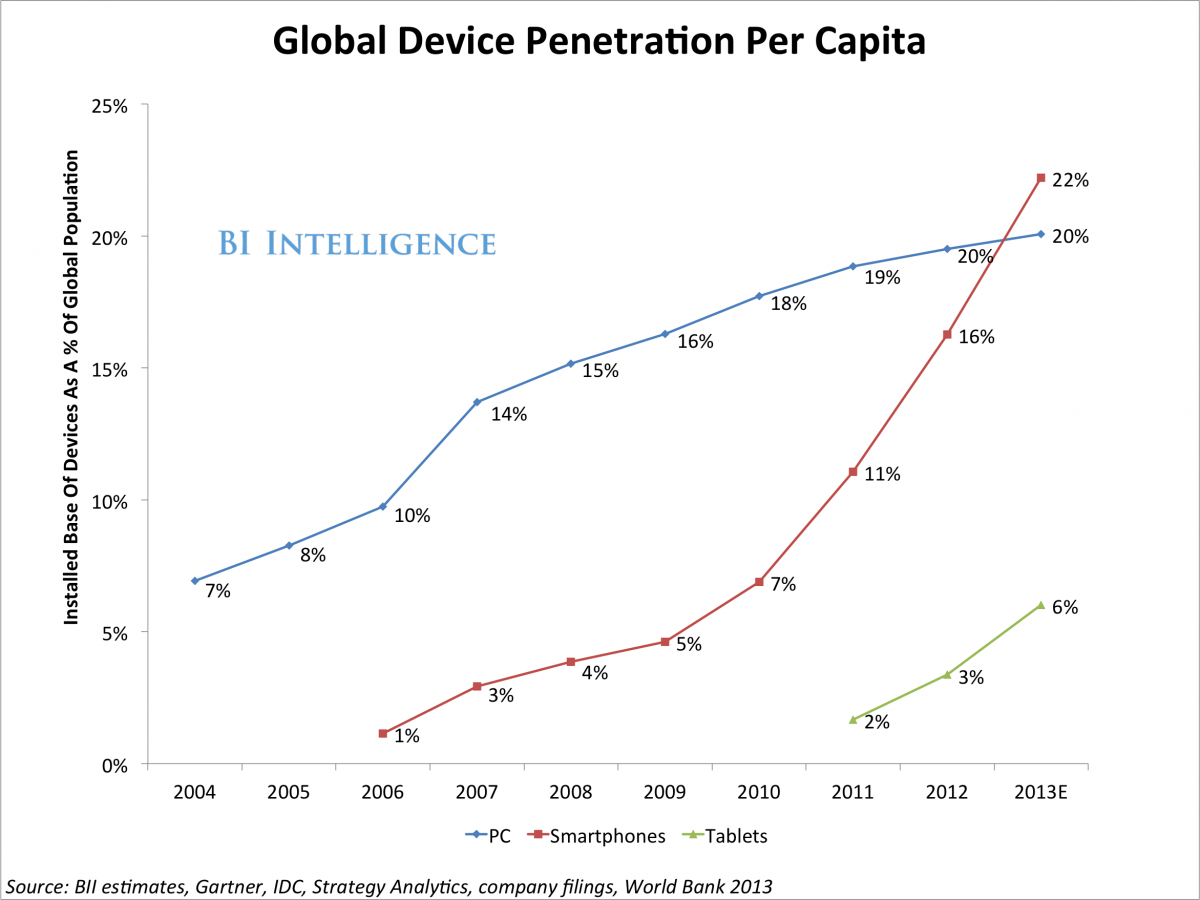Why UX is the New Black

By Adam Kleinberg
In a few weeks, I'll be moderating a panel at ad:tech NYC featuring senior marketing and design leaders from Yahoo!, Bank of America, MasterCard and GE on the topic of Why User Experience is the New Black.
"Just why is UX the new black?" you ask.
That's a great question. Brands are investing in user experience at unprecedented levels. They are creating rich, immersive experiences that are delighting customers, commanding attention and applause. CEOs are taking notice. Even Google has decided it cares about design .
What's created this shift? Of course, I have a rock star panel that I'll be asking just that, but I have some theories myself.
1. The App-mosphere
One-third of U.S. adults have a tablet device. Over 60% of Americans now possess a smartphone—22% of people around the world. As the chart below illustrates, that trend is only increasing.

These devices are loaded with apps. Folks are swiping, zooming and tapping to their hearts delight. The amazing experiences they are having on these devices has recalibrated their expectations. This is their new level set. They expect...no, they demand —to be delighted.
The cost of not delivering? They simply will go somewhere else and won't come back.
2. The mobile imperative
A second reason is the sheer number of devices we interact with on a daily basis. Cisco now predicts that by 2017 the average American will have 5 internet-connected devices. And you only have to walk down the street and count the faces glued to people's phones to know that we are connected to them all the time. This has created a mobile imperative for brands.
Brands have, quite universally, delivered crappy mobile experiences. This is not because they haven't cared about customers, but it was simply never worth the investment to create great ones in the past.
This means that the entire internet needs to be rebuilt. It's not really a sustainable option not to have a mobile-optimized presence anymore. Even for those brands—like the one's on my panel—that have invested in great user experience design optimized for mobile devices, the need to continue to evolve those platforms for more and more screens is pushing UX to the fore.
3. Better technology. Better UX
On the other side of the coin is technical enablement. Simply, technologies and techniques like HTML5, responsive design and advanced Javascript have made it technically possible to build better experiences.
We also have fatter pipes—over 90% of Americans are now on broadband, so not only can people build it, but those users can actually experience it.
What's more, advanced applications of JavaScript are making rich user experiences even more game-like in nature. Now, even web applications can be designed responsively driving the need for more robust, more complex UX design.
4. Money
According to eMarketer, U.S. e-commerce sales will top $250 billion in 2013. By 2017, that estimate is expected to top $434 billion. That is more money than Walter White makes in a month.

Obviously, companies all want more than their share. And that means having user experiences that align with their brands. Users don't expect the same experience when they walk into a Nordstrom's that they do when they walk into a Walmart. These company's websites should reflect that as well.
5. The consumer journey
Finally (at least for this list), marketers are realizing that user experience needs to accurately reflect the reality of the meandering customer journey today.
There have been two sea changes in marketing over the past decade and a few. The first is that digital technology allowing us to measure the impact of our marketing investments for the first time. The second, is relentless financial superpressure from turbulent markets (and governments).
The result has been a relentless focus on ROI in organizations. The user experiences that have sprouted up around the internet have been designed to be conversion machines. This is not necessarily a bad thing, but it leaves us blind to a simple fact.
Not everyone who visits our websites is ready to buy something. They may not be ready to jump into your conversion funnel. Advertising used to be about perception, persuasion, motivation, desire. The human brain has rationally-driven left side and an emotionally-driven right side. It's that right side that wears the pants when it comes to how people make decisions.
We need to design experiences for users that reflect that. Content cannot be an afterthought we just pop into a frame anymore. The stories we tell need to be part of the experiences we design.
In short, we need to balance the science of UX with the art. And everybody knows, the artsy kids all wear black.

Traction CEO Adam Kleinberg recently gave his thoughts on measuring content marketing ROI to Giselle Abramovich of CMO.com.

Traction made the San Francisco Business Times list of the Fastest Growing Companies in the Bay Area... by the skin of our teeth.

Should you create a media-plan first or content-plan first?
